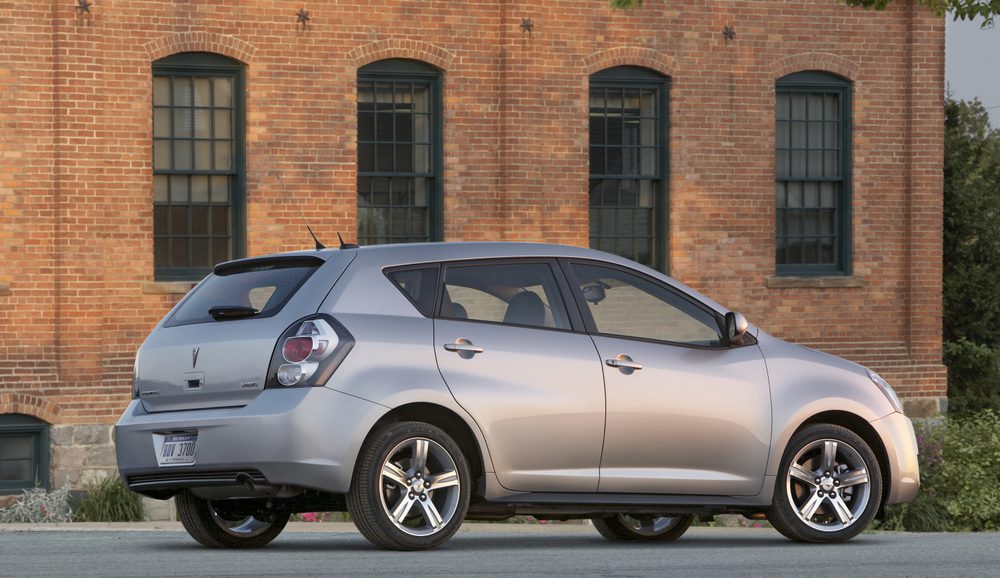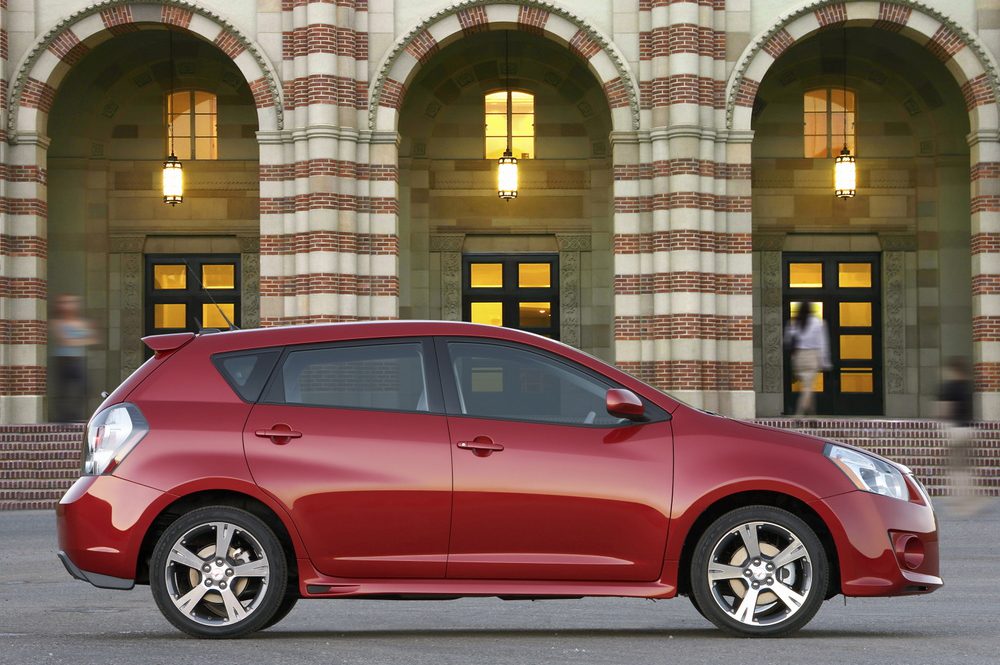| Compact car; Built in USA |
|
|
| Good condition price range: $8,500 – $13,800* |

2009 Pontiac Vibe Front

2009 Pontiac Vibe Rear

2009 Pontiac Vibe Interior

2009 Pontiac Vibe Profile
| Pros: |
|
| Cons: |
|
Frankly, this wagon comes across as cost-cutting crude in places and is less fun to drive than it looks. Even so, Vibe is a versatile, practical compact. Available all-wheel drive is a nice find in this class. GT models offer sportier moves, but sacrifice too much ride comfort in the process. One potential demerit is the fact that the Pontiac brand has faded into non-existence; but that could actually trigger used-Vibe prices downward to tempting levels.
Overview
Close kin to Toyota’s Matrix, the 2003-2008 Pontiac Vibe was a compact wagon with front-drive or all-wheel drive. For 2009, the Vibe was redesigned with freshened styling, more power, and new features. This season also saw the return of all-wheel drive and sport-themed models. Vibe was a four-door wagon that shared its basic design with the also-redesigned 2009 Toyota Matrix.
The 2009 Vibe was almost identical in size compared to the prior generation. Front-drive models were offered in base and GT trim levels. Also available was the AWD Base wagon. Base 1.8 versions had a 132-horsepower 1.8-liter four-cylinder engine. Base 2.4, AWD Base, and GT models got a 158-horsepower 2.4-liter four-cylinder. On the base and GT, a five-speed manual transmission was standard. A four-speed automatic was optional on the base 1.8 and standard on AWD versions. A five-speed automatic was optional on front-drive Vibes with the 2.4-liter engine. Standard safety features included antilock brakes, traction control, an antiskid system, curtain side airbags, and front side airbags. GM’s OnStar assistance also was standard. All Vibes had 60/40 split folding rear seatbacks. An available pop-up cargo organizer provided divided storage compartments and bag hooks. Rivals included the Chevrolet HHR, Chrysler PT Cruiser, and Dodge Caliber.
Yearly Updates
| 2010 Vibe Largely unchanged for 2010, the Vibe was destined to disappear soon. General Motors chose to phase out the Pontiac brand by the end of calendar 2009. Therefore, 2010 would be the Vibe’s final (abbreviated) model year before fading away. |
